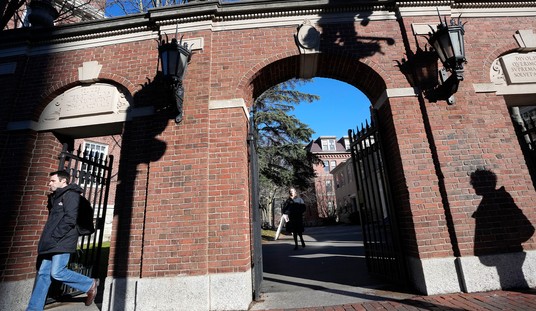He’s making a simple point here but a reassuring one in light of the hair-raising case counts lately in some European countries. Italy and France each saw more than 20,000 confirmed cases yesterday, tantamount to 100,000+ per capita in the U.S. Poland saw more than 17,000, on the order of 150,000 here when adjusted for population. Cases in the United States were just 36,000 or so by comparison.
The question Gottlieb’s asking himself is whether past is prologue. Think back to last February when the first terrible wave of COVID began crashing down on Italy, leaving so many dead that authorities struggled to process all the bodies. “They’re three weeks ahead of us,” scientists told us. “What’s happening there will be happening here in a month.” And they turned out to be right in New York City. Then, early last October, Italy began to see another steep spike in cases. Cases in the U.S. ticked up that month but didn’t really begin taking off until November, a second example of us trailing the Europeans in our pandemic by three or four weeks.
Does that mean we’re looking at another massive spike a month from now? Nope, says Gottlieb — at least, probably not. Our path and theirs have finally and mercifully diverged.
"Now I think the tables have turned where I think we are ahead of Europe," says @ScottGottliebMD. "We have much more immunity in our population both prior infection– but also now from vaccinations." pic.twitter.com/YfhXOBSdyj
— Squawk Box (@SquawkCNBC) March 15, 2021
Why is the U.S. (and the UK, where cases have cratered) in a better position to limit infections than Europe now? You know why:

Here’s what paths diverging look like in terms of daily cases:
Meanwhile, the gap between the EU and the US continues to grow as we are much faster to vaccinate. pic.twitter.com/BGmOvtips0
— Nate Silver (@NateSilver538) March 15, 2021
Europe’s vaccination machinery is beginning to run more smoothly but the gap between them and us may yet widen. We did *six million shots* this weekend alone, equivalent to a bit less than two percent of the population. The Times’s latest estimate of when half the population will have received at least one dose is currently May 15, just two months from now, and that pace is accelerating. As for the most vulnerable members of American society, people who live in nursing homes, the numbers couldn’t be more encouraging:
I continue to like the way this is trending… pic.twitter.com/euKXbsGe3K
— David Grabowski (@DavidCGrabowski) March 11, 2021
Note how there are now fewer cases among nursing-home residents than there are among staff, likely due to the fact that residents were among the first groups prioritized for vaccination in September.
But there’s been a complication. Once again an outbreak in New York potentially threatens the whole country. I wrote about it last week, noting that the rise of the “New York variant” and resulting plateauing in cases there is worrisome. Gottlieb’s worried too:
The variant B1526 is rising in NYC. It now represents about 40% of all sequenced cases with S-gene dropout. The B1526 with E484K mutation is about half of these cases, at about 20%. NYC trends in cases, hospitalizations look concerning. A key question: how much is B1526 a factor? pic.twitter.com/QhpIxKlBBc
— Scott Gottlieb, MD (@ScottGottliebMD) March 14, 2021
The E484 mutation is the same one that shows up in the South African variant, the strain that the vaccines have had the most trouble overcoming. “For some people, a mutation at E484 meant the antibodies’ ability to block the virus from entering cells fell more than 10-fold,” Live Science reported in January. The New York variant has also been growing as a percentage of total cases in NYC based on genetic sequencing, which suggests that it’s more contagious than common coronavirus. “Some scientists are calling this the ‘escape variant’ because it may have the ability to avoid our immune system – possibly making our treatments less effective,” said one doctor to ABC. We *could* be facing a vaccine-resistant strain like the South African one that’s capable of reinfecting people who’ve already recovered from COVID, and it’s spreading in the country’s most populous city.
And if we are, that would also mean a divergence in our path and Europe’s. The strain that’s overwhelmed countries like Italy is the British one, which is also circulating here in the U.S. and is more contagious than standard coronavirus. But the British variant appears to be just as weak against the available vaccines as the original virus is. The EU could solve its problem simply by vaccinating more people more rapidly. That may not be the case with New York’s variant, although we’ll know more soon.. I’ll leave you with another clip from this morning’s interview in which Gottlieb talks about the uncertainty of the moment. If doctors see cases in NYC continue to drop over the next few weeks as vaccinations continue, that’ll be circumstantial evidence that the vaccine works on this new strain of the virus as well. If instead cases start *rising* even though more people have been immunized, hoo boy.
"We are in this uncertain period right now for the next 2 weeks or so that we don't really understand which direction this new variant is going in," says @ScottGottliebMD on B1526 in New York. pic.twitter.com/Jo6gVhiBXS
— Squawk Box (@SquawkCNBC) March 15, 2021








Join the conversation as a VIP Member